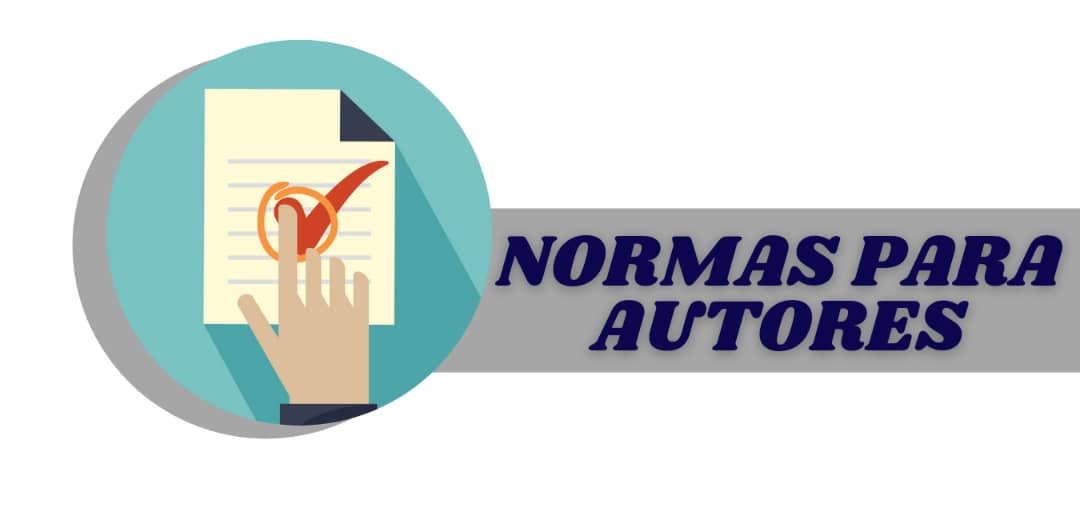Ciliopatías: bases moleculares y celulares en enfermedades del sistema nervioso
Texto completo:
PDFResumen
Durante mucho tiempo se descartó la importancia estructural y funcional del cilio primario. El avance tecnológico a inicios del presente siglo ha propiciado la comprensión de su relevancia. Debido a su amplia distribución celular, su papel emergente en la transducción de importantes vías de señalización y sus disfunciones, se ha visto implicada en un amplio espectro de enfermedades humanas denominadas ciliopatías, en la que son hallazgos comunes los defectos neurológicos. Reconocer cómo están involucrados los genes asociados a los cilios en diversos síndromes neurológicos ha mejorado el entendimiento de las funciones del cilio primario en el SNC. De acuerdo con lo que se viene diciendo, luego de la revisión de 61 referencias bibliográficas, este análisis pretende describir la relación molecular y morfofuncional de las ciliopatías en el organismo. El conocimiento del cilio primario y del desempeño que se le ha adscrito, permitirá la elucidación de un número importante de enfermedades genéticas asociadas a su disfunción
ABSTRACT
During a lot of time, the structural and functional importance of the primary cilium was discarded. The technological advance to beginnings of the present century it has propitiated the understanding of their relevance. Due to their cellular wide distribution, their emergent paper in the transduction of important signaling roads and their dysfunctions, it has been implied in a wide spectrum of human illnesses denominated cilium sicks, in which are common discoveries the neurological defects. To recognize how the genes associated to the ciliums are involved in diverse neurological syndromes it has improved the understanding of the functions of the primary cilium in Nervous Central System (NCS). In accordance with what one comes saying, after the revision of 61 bibliographical references, this analysis seeks to describe the molecular relationship and morfofuncional of the cilium sicks in the organism. The knowledge of the primary cilium and of the acting that has been attributed, it will allow the elucidation of an important number of genetic illnesses associated to their dysfunction
Palabras clave
Referencias
Bloodgood, R. Sensory reception is an attribute of both primary cilia and motile cilia. Journal of Cell Science. 2010; 123 (4), 505-509.
Ward CJ, Yuan D, Masyuk TV, Wang X, Punyashthiti R, Whelan S, Bacallao R, TorraR, LaRusso NF, Torres VE, Harris PC. Cellular and subcellular localization of the ARPKD protein; fibrocystin is expressed on primary cilia. Hum Mol Genet. 2003;12:2703–10.
Li JB, et al. Comparative genomics identifies a flagellar and basal body proteome that includes the BBS5 human disease gene. Cell. 2004;117:541–52.
Gherman A, Davis EE, Katsanis N. The ciliary proteome database: an integrated community resource for the genetic and functional dissection of cilia. Nat Genet. 2006;38:961–2.
Satir P, Søre T. Christensen. Structure and function of mammalian cilia. Histochemistry and Cell Biology. 2009;129 (6): 687–693.
Lancaster MA, Gleeson JG. The primary cilium as a cellular signaling center: lessons from disease. Curr. Opin. Genet. Dev. 2009;19 (3):220–9.
Cardenas-Rodríguez M, Badano JL. Ciliary biology: Understanding the cellular and genetic basis of human ciliopathies. Am J Med Genet Part C Semin Med Genet. 2009. 151C:263–280.
Hurd TW, Hildebrandt F. Mechanisms of Nephronophthisis and Related Ciliopathies. Nephron Exp. Nephrol. 2011;118 (1): e9–e14.
Davenport, J. R. An incredible decade for the primary cilium: A look at a once-forgotten organelle. AJP: Renal Physiology. 2005;289 (6): F1159–F1169.
Badano JL, Leitch CC, Ansley SJ, May-Simera H, Lawson S, Lewis RA, Beales PL, Dietz HC, Fisher S, Katsanis N. Dissection of epistasis in oligogenic Bardet-Biedl syndrome. Nature. 2006; 439:326–30.
Sharma N, Berbari NF, Yoder BK. Ciliary dysfunction in developmental abnormalities and diseases. 2008;Curr Top Dev Biol 85:371–427.
Badano JL, Mitsuma N, Beales PL, Katsanis N. The ciliopathies: An emergin class of human genetic disorders. Annu Rev Genomics Hum Genet. 2006;7:125–148.
Davis EE, Katsanis N. The ciliopathies: A transitional model into systems biology ofhuman genetic disease. Curr Opin Genet Dev. 2012; 22(3): 290–303.
Kavita P, Davis E and Katsanis N. Unique among ciliopathies: primary ciliary dyskinesia, a motile cilia disorder. F1000Prime Reports 2015, 7:36.
Valente E M, Rasim O, Gibbs E, Gleeson J. Primary cilia in neurodevelopmental disorders. Nature Reviews Neurology. 2014;10, 27-36.
Atkinson KF, Kathem SH, Jin X, Muntean BS, Abou-Alaiwi WA, Nauli AM, Nauli SM Dopaminergic signaling within the primary cilia in the renovascular system. Front. Physiol. 2015;6:103.
Tomer A, Andreia M M, Edmund K, Thomas K, Shankar S, et al. Decoding cilia function: defining specialized genes required for compartmentalized cilia biogenesis. Cell. 2004;117, 527–539.
Sarmed K, Ashraf M, Surya M. The Roles of Primary cilia in Polycystic Kidney Disease. AIMS Mol Sci. 2014;1(1): 27–46.
Kleene S, Van Houten J. Electrical Signaling in Motile and Primary Cilia. Bioscience. 2014 . 64(12): 1092–1102.
Jeong ho L, Silhavy J, Eun Lee, Al-Gazali L, Tomas S, Davis E, Bieas et al. Evolutionarily Assembled cis-Regulatory Module at a Human Ciliopathy Locus. Science. 2012; 335(6071): 966–969.
Davenport JR, Watts AJ, Roper VC, Croyle MJ, van Groen T, Wyss JM, Nagy TR, Kesterson RA, Yoder BK. Disruption of intraflagellar transport in adult mice leads to obesity and slow-onset cystic kidney disease. Curr Biol. 2007;17:1586–1594.
Satir P. Cilia biology: stop overeating now! Curr Biol. 2007;17:R963–R965.
Breunig JJ, Sarkisian MR, Arellano JI, Morozov YM, Ayoub AE, Sojitra S, Wang B, Flavell RA, Rakic P, Town T. Primary cilia regulate hippocampal neurogenesis by mediating sonic hedgehog signaling. Proc Natl Acad Sci. 2008;105:13127–13132.
Danilov AI, Gomes-Leal W, Ahlenius H, Kokaia Z, Carlemalm E, Lindvall O:Ultrastructural and antigenic properties of neural stem cells and their progeny in adult rat subventricular zone. Glia. 2009;57:136–152.
Moser J, Fritzler M, Rattner J. Ultrastructural characterization of primary cilia inpathologically characterized human glioblastomamultiforme (GBM) tumors. BMC Clinical Pathology, 2014;14:40.
Badano JL, Mitsuma N, Beales PL, Katsanis N. The ciliopathies: an emerging class of human genetic disorders. Annu Rev Genomics Hum Genet. 2006;7:125–148.
Wong SY, Seol AD, So PL, Ermilov AN, Bichakjian CK, Epstein EH, Dlugosz AA, Reiter JF. Primary cilia can both mediate and suppress Hedgehog pathway-dependent tumorigenesis. Nat Med 2009;15:1055–1061.
Jeong Ho L, Gleeson J. The role of primary cilia in neuronal function. Neurobiol Dis. 2010;38(2): 167–172.
Adams M, Smith CV, Logan C. Recent advances in the molecular pathology, cell biology and genetics of ciliopathies. J Med Genet. 2008;45:257–267.
Aoife M, Philip L. Ciliopathies: an expanding disease spectrum. Pediatr Nephrol. 2011;26(7): 1039–1056.
Radheshyam P, Ajarshi B, Ituparna D, Uttara C. Association of Joubert Syndrome and Hirschsprung Disease. Indian Pediatric. 2015;61 (52)
Romani M, Micalizzi A, Valente E. Joubert syndrome: congenital cerebellar ataxia with the molar tooth. Lancet Neurol. 2013;12, 894–905.
Keppler-Noreuil, K. Brain tissue- and region-specific abnormalities on volumetric MRI scans in 21 patients with Bardet–Biedl syndrome (BBS). BMC Med. Genet. 2011;12, 101.
Bennouna-Greene, V. et al. Hippocampal dysgenesis and variable neuropsychiatric phenotypes in patients with Bardet–Biedl syndrome underline complex CNS impact of primary cilia. Clin. Genet. 2011;80, 523–531.
Baker K, et al. Neocortical and hippocampal volume loss in a human ciliopathy: a quantitative MRI study in Bardet–Biedl syndrome. Am. J. Med. Genet. 2011;155A, 1–8.
Carter C, et al. Abnormal development of NG2+PDGFR-α+ neural progenitor cells leads to neonatal hydrocephalus in a ciliopathy mouse model. Nat. Med. 2012;18, 1797–1804.
Zhang Q, et al. Bardet–Biedl syndrome 3 (Bbs3) knockout mouse model reveals common BBS-associated phenotypes and Bbs3 unique phenotypes. Proc. Natl Acad. Sci. 2012;108, 20678–20683.
Zhang Q, et al. BBS7 is required for BBSome formation and its absence in mice results in Bardet–Biedl syndrome phenotypes and selective abnormalities in membrane protein trafficking. 2013;J. Cell Sci. 126, 2372–2380.
Poretti A, et al. Delineation and diagnostic criteria of oral–facial–digital syndrome type VI. Orphanet J. 2012;Rare Dis. 7, 4.
Bisschoff I, et al. Novel mutations including deletions of the entire OFD1 gene in 30 families with type 1 orofaciodigital syndrome: a study of the extensive clinical variability. Hum. Mutat. 2013;34, 237–247.
Thomas S, et al. TCTN3 mutations cause Mohr–Majewski syndrome. Am. J. Hum. Genet. 2012;91, 372–378.
Honkala H. et al. Unraveling the disease pathogenesis behind lethal hydrolethalus syndrome revealed multiple changes in molecular and cellular level. Pathogenetics. 2009. 2
Dammermann A. et al. The hydrolethalus syndrome protein HYLS-1 links core centriole structure to cilia formation. Genes Dev. 2009;23, 2046–2059.
Jamsheer A, et al. Expanded mutational spectrum of the GLI3 gene substantiates genotype–phenotype correlations. J. Appl. Genet. 2012;53, 415–422.
Breunig JJ, et al. Primary cilia regulate hippocampal neurogenesis by mediating sonic hedgehog signaling. Proc. Natl. Acad. Sci. 2008;105:13127–13132.
Giordano L, et al. Joubert syndrome with bilateral polymicrogyria: clinical and neuropathological findings in two brothers. Am. J. Med. Genet., A. 2009;149A:1511–1515.
Spampinato MV, et al. Absence of decussation of the superior cerebellar peduncles in patients with Joubert syndrome. Am. J. Med. Genet., A. 2008;146A:1389–1394.
Mandl L, Megele R. Primary cilia in normal human neocortical neurons. Z. Mikrosk. Anat. Forsch. 1989;103:425–430.
Bishop GA, et al. Type III adenylyl cyclase localizes to primary cilia throughout the adult mouse brain. J. Comp. Neurol. 2007;505:562–571.
Tang Z, et al. Autophagy promotes primary ciliogenesis by removing OFD1 from centriolar satellites. Nature. 2013;502, 254–257.
Pampliega O, et al. Functional interaction between autophagy and ciliogenesis. Nature. 2013;502, 194–200.
Pedersen LB, Rosenbaum JL. Intraflagellar transport (IFT) role in ciliary assembly, resorption and signalling. Curr. Top. Dev. Biol. 2008; 85, 23–61.
Lim Y, Tang B. Getting into the cilia: Nature of the barrier(s). Mol. Membr. Biol. 2013; 30, 350–354.
Szymanska K, Johnson CA. The transition zone: an essential functional compartment of cilia. Cilia. 2012; 1, 10.
Garcia-Gonzalo FR, et al. A transition zone complex regulates mammalian ciliogenesis and ciliary membrane composition. Nat. Genet. 2011;43, 776–784.
Chih B. et al. A ciliopathy complex at the transition zone protects the cilia as a privileged membrane domain. Nat. Cell Biol. 2012;14, 61–72.
Wei Q. et al. The BBSome controls IFT assembly and turnaround in cilia. Nat. Cell Biol. 2012;14, 950–957.
Zhang Q, Seo S, Bugge K, Stone EM, Sheffield VC. BBS proteins interact genetically with the IFT pathway to influence SHH-related phenotypes. Hum. Mol. Genet. 2012;21, 1945–1953.
Kasahara K. et al. Ubiquitin-proteasome system controls ciliogenesis at the initial step of axoneme extension. Nat. Commun. 2014; 5:5081.
Miyamoto T. et al. The Microtubule-Depolymerizing Activity of a Mitotic Kinesin Protein KIF2A Drives Primary Cilia Disassembly Coupled with Cell Proliferation. Cell Reports 2015; 10, 664–673.
Nigg, E A, Stearns T. The centrosome cycle: Centriole biogen-esis, duplication and inherent asymmetries. Nat. Cell Biol. 2011; 13, 1154–1160.
Kobayashi T, Dynlacht B D. Regulating the transition from centriole to basal body. J. Cell Biol. 2011; 193, 435–444.
Enlaces refback
- No hay ningún enlace refback.
Copyright (c) 2015 16 de Abril





